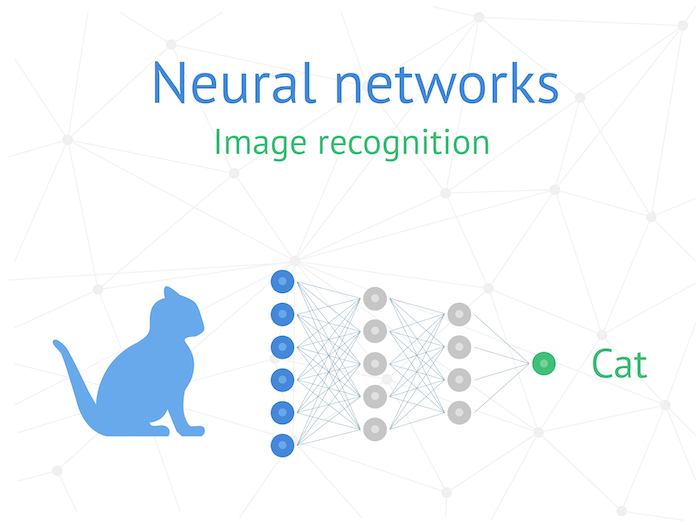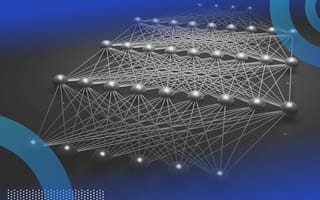Few-shot learning is a subfield of machine learning and deep learning that aims to teach AI models how to learn from only a small number of labeled training data. The goal of few-shot learning is to enable models to generalize new, unseen data samples based on a small number of samples we give them during the training process.
How Does Few-Shot Learning Work?
In general, few-shot learning involves training a model on a set of tasks, each of which consists of a small number of labeled samples. We train the model to learn how to recognize patterns in the data and use this knowledge.
One challenge of traditional machine learning is the fact that training models require large amounts of training data with labeled training samples. Training on a large data set allows machine learning models to generalize new, unseen data samples. However, in many real-world scenarios, obtaining a large amount of labeled data can be very difficult, expensive, time consuming or all of the above. This is where few-shot learning comes into play. Few-shot learning enables machine learning models to learn from only a few labeled data samples.
Why Is Few-Shot Learning Important?
One reason few-shot learning is important is because it makes developing machine learning models in real-world settings feasible. In many real-world scenarios, it can be challenging to obtain a large data set we can use to train a machine learning model. Learning on a smaller training data set can significantly reduce the cost and effort required to train machine learning models. Few-shot learning makes this possible because the technique enables models to learn from only a small amount of data.
Few-shot learning can also enable the development of more flexible and adaptive machine learning systems. Traditional machine learning algorithms are typically designed to perform well on specific tasks and are trained on huge data sets with a large number of labeled examples. This means that algorithms may not generalize well to new, unseen data or perform well on tasks that are significantly different from the ones on which they were trained.
Few-shot learning solves this challenge by enabling machine learning models to learn how to learn and adapt quickly to new tasks based on a small number of labeled examples. As a result, the models become more flexible and adaptable.

Few-shot learning has many potential applications in areas such as computer vision, natural language processing (NLP) and robotics. For example, when we use few-shot learning in robotics, robots can quickly learn new tasks based on just a few examples. In natural language processing, language models can better learn new languages or dialects with minimal training data.
Approaches to Few-Shot Learning
Few-shot learning has become a promising approach for solving problems where data is limited. Here are three of the most promising approaches for few-shot learning.
Meta-Learning
Meta-learning, also known as learning to learn, involves training a model to learn the underlying structure (or meta-knowledge) of a task. Meta-learning has shown promising results for few-shot learning tasks where the model is trained on a set of tasks and learns to generalize to new tasks by learning just a few data samples. During the meta-learning process, we can train the model using meta-learning algorithms such as model-agnostic meta-learning (MALM) or by using prototypical networks.
Data Augmentation
Data augmentation refers to a technique wherein new training data samples are created by applying various transformations to the existing training data set. One major advantage of this approach is that it can improve the generalization of machine learning models in many computer vision tasks, including few-shot learning.
For computer vision tasks, data augmentation involves techniques like rotation, flipping, scaling and color jittering existing images to generate additional image samples for each class. We then add these additional images to the existing data set, which we can then use to train a few-shot learning model.
Generative Models
Generative models, such as variational autoencoders (VAEs) and generative adversarial networks (GANs) have shown promising results for few-shot learning. These models are able to generate new data points that are similar to the training data.
In the context of few-shot learning, we can use generative models to augment the existing data with additional examples. The model does this by generating new examples that are similar to the few labeled examples available. We can also use generative models to generate examples for new classes that are not present in the training data. By doing so, generative models can help expand the data set for training and improve the performance of the few-shot learning algorithm.
Applications for Few-Shot Learning
Computer Vision
In computer vision, we can apply few-shot learning to image classification tasks wherein our goal is to classify images into different categories. In this example, we can use few-shot learning to train a machine learning model to classify images with a limited amount of labeled data. Labeled data refers to a set of images with corresponding labels, which indicate the category or class to which each image belongs. In computer vision, obtaining a large number of labeled data is often difficult. For this reason, few-shot learning might be helpful since it allows machine learning models to learn on fewer labeled data.
Natural Language Processing
Few-shot learning can be applied to various NLP tasks like text classification, sentiment analysis and language translation. For instance, in text classification, few-shot learning algorithms could learn to classify text into different categories with only a small number of labeled text examples. This approach can be particularly useful for tasks in the area of spam detection, topic classification and sentiment analysis.
Robotics
In robotics, we can apply few-shot learning to tasks like object manipulation and motion planning. Few-shot learning can enable robots to learn to manipulate objects or plan their movement trajectories by using small amounts of training data. For robotics, the training data typically consists of demonstrations or sensor data.
Medical Imaging
In medical imaging, learning from only a few exposures can help us train machine learning models for medical imaging tasks such as tumor segmentation and disease classification. In medicine, the number of available images is usually limited due to strict legal regulations and data protection laws around medical information. As a result, there is less data available on which to train machine learning models. Few-shot learning solves this problem because it enables machine learning models to successfully learn to perform the mentioned tasks on a limited data set.





